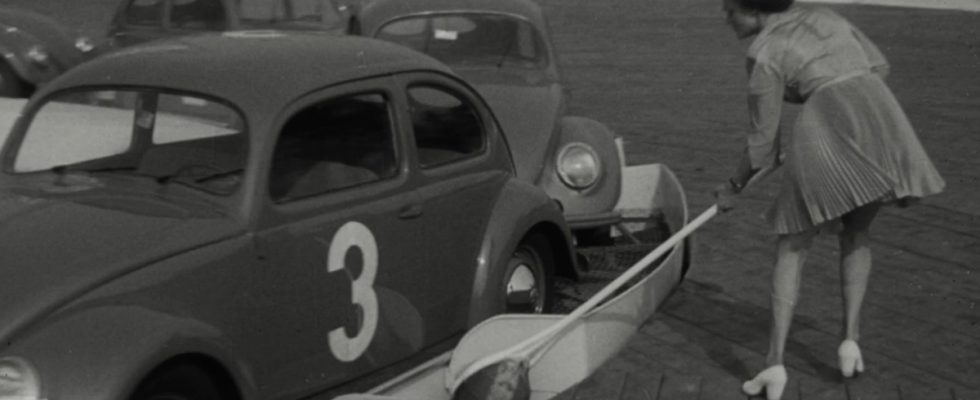They were in the USA and had rented all the equipment and cars in order to film the planned documentary about the development, history and missions of the legendary American B-52 long-range bomber. But then Hartmut Bitomsky got a phone call from the Pentagon. It was said that they couldn’t film because of a military operation. And about the military aircraft, “they could forget about that.” That was 25 years ago, at the end of 1998, when America began “Operation Desert Fox” in Iraq. The result was, as Bitomsky recently said in… Munich workshop cinema said that they just recorded “other stuff” for a few days. And some scenes, including those at the former atomic bomb test site in Nevada, made it into the film.
But that’s just how it is with reality, which doesn’t really care about filmmakers. And that the world, just like the film image, continually evades our view Bitomsky his long film career taught. The 81-year-old will be talking a lot about filmmaking in the workshop cinema from January 11th to 20th. The director, who has been living in Munich for a year, is a guest there with a “Carte Blanche”. That means: The cinema shows in cooperation with the magazine “Sigi Goetz Entertainment” central works and Bitomsky will present works he has selected by Christian Petzold, Budd Boetticher and others. You should take advantage of the opportunity. Because Bitomsky’s more than 40 films are only very rarely seen anymore.
That’s why they’re appropriate for cinema and television, as they oscillate between essays and documentaries. A historical and aesthetic form of “media archeology” is practiced here. With topics such as work, German history, American myths, architecture or, as in the 2007 film of the same name, “Dust”. This will be the last work of his own to be seen on January 19th. Associatively and in symphonic movements, the film follows the dust into all areas of life and research. You will meet cleaning crews, but also scientists and artists who work on the dusty matter. At the beginning, however, there are “Germany Pictures”: a sparsely commented collage of Nazi propaganda and Nazi cultural film material.
That Bitomsky, alongside Harun Farocki and Holger Meins, was part of the politicized first year of the 1966 German Film and Television Academy Berlin (DFFB), you can always tell in his films. A Marxist-trained analysis of reality and film language is carried out, but the love for cinema is always evident. This can also be felt in his texts for the legendary magazine “Filmkritik” or in film books such as “The Redness of the Red of Technicolor”. As dean and lecturer at the Film & Video Department of the California Institute of the Arts, which he was from 1993, he may have influenced numerous students. Or as director of the DFFB from 2006 to 2009.
Hartmut Bitomsky was part of the first year of the German Film and Television Academy in Berlin.
(Photo: Bernhard Wildegger)
The fact that killing in films is often “smooth and routine” is something that Bitomsky dealt with in “The Cinema and Death”, which runs on January 12th. The “Reichsautobahn” as a German myth is the topic a day later. On January 14th it goes to “Highway 40 West”, conveyed as a “dramatic story of erosion” before “The VW Complex” then says goodbye to the industrial age. “The UFA” tells the subsidy story of the famous film company. Another film is dedicated to “Imaginary Architecture” until “B-52” takes the bomber to Vietnam and finally to the airplane graveyard. A “cathedral” of technology, conceived for destruction, suddenly becomes worthless and destroyed with a guillotine. For Hartmut Bitomsky, it’s a “tragic” image for “almost everything” that went wrong in the 20th century.
Carte Blanche for Hartmut Bitomsy, January 11th to 20th, Workshop Cinema, Fraunhoferstr. 9, werkstattkino.de

